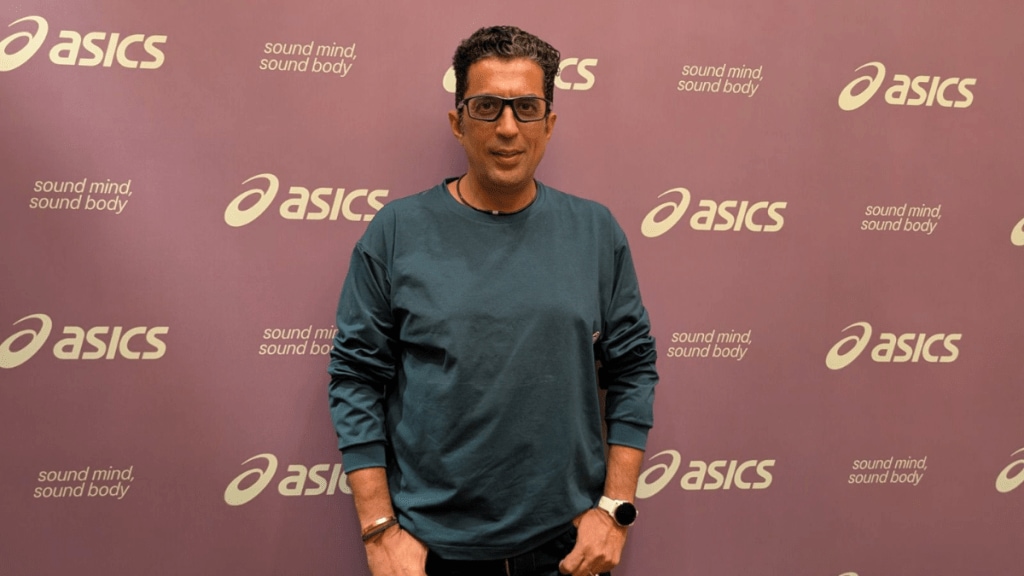“Shoes are a mirror of a person’s soul,” a saying that has never been more true in today’s fashion-driven world. Once merely a necessity for protection and comfort, footwear has evolved into a powerful symbol of style and status, with consumers increasingly obsessed with the latest trends and innovations. This shift in perception has spurred brands to redefine their offerings, catering to a growing audience that values functionality and fashion. The sneaker market in India is forecasted to generate a revenue of three billion dollars in 2024, according to Statista, a market research firm. Furthermore, in terms of per capita revenue, India is expected to generate $2.06 per person in 2024.
Founded in 1949, ASICS has long been a pioneer in performance running gear, and as of now, the brand has established a foothold in the Indian market, boasting 111 stores nationwide. Recently, ASICS has elevated its profile further by appointing Shraddha Kapoor, actor, as its new brand ambassador, aiming to connect with a wider demographic of style-conscious consumers. ASICS India’s revenue from the sales of goods rose 37% to Rs 344.86 crore in FY23 from Rs 251.75 crore in FY22. The company’s net profit rose 37.7% to Rs 55.12 crore in FY23 from Rs 40.02 crore in FY22.
In a recent conversation with BrandWagon Online, Rajat Khurana, managing director, ASICS India, delves into the challenges and opportunities the brand faces as it navigates this rapidly evolving landscape of athletic footwear.
What challenges does ASICS face in the Indian market, particularly with increasing competition from both global and local brands?
When it comes to challenges, demand is not an issue. We’re seeing strong consumer demand across tier one, tier two, and even tier three cities in India. However, one challenge lies in local production. While we’ve already started manufacturing footwear in India and have reached 30% local production, producing high-end footwear domestically is still a hurdle. The infrastructure for manufacturing such products in India has yet to fully develop. Though we’re steadily increasing local production, it will take time for any brand to match the scale and technology available in other countries, especially for high-end footwear.
With new affordable brands entering the athletic wear market, what challenges is ASICS facing, and how is the brand responding to stay competitive?
We’ve been known for our performance running gear, which makes up more than 50% of our business. In recent years, many new brands have entered the sports style segment, driven by the growing sneaker culture in India. Foreign multi-brand retailers like Foot Locker, Limited Edition, and Extra Butter have also launched stores here, recognising shifting trends similar to those in the US and Europe. In response, we’ve strengthened our athleisure segment, introducing a new product range for sports style. Our stores now have dedicated sections for this category, and we’ve seen its contribution to our overall business grow. While we may not yet be leaders in sports style, we are catching up quickly. Our USP combines function with style, especially through our gel technology, which ensures that customers not only look good but also experience the performance benefits.
What growth strategy has ASICS set for a price-sensitive market like India, and how does e-commerce factor into that strategy?
Our business is channel-focused across three key verticals: retail stores, distribution, and e-commerce. We currently operate 111 stores and have regional distributors who supply to mom-and-pop stores across India. E-commerce also plays a significant role. We sell through platforms like Flipkart and Amazon, as well as the company-owned website. We’ve seen substantial growth in our direct-to-consumer online business, where customers perceive our .com site as the ASICS brand store, which helps maintain our premium image. We’re positioning ASICS as a preferred premium sports brand in India by focusing on technology and comfort, not just aesthetics.
How has ASICS’ Foot ID technology contributed to your ROI, and can you share any metrics or insights on its financial impact?
Our Foot ID technology analyses the biomechanics of a consumer’s feet. When someone visits our store, they can run on a treadmill, and we analyse their running pattern to recommend the most suitable shoe. Foot ID has an impressive 90% conversion rate, meaning that consumers who use this service are highly likely to make a purchase. This service is incredibly helpful to consumers, as it provides detailed insights into how their feet behave when running. Currently, 80-85% of our stores are equipped with Foot ID machines, and it’s proven to be a valuable tool for both us and our customers.
Which regions in India have you seen a surge in demand for ASICS products?
Initially, the demand for sports style has been concentrated in tier-one cities, particularly the metros. We currently have over 111 stores in India, with most focused on performance gear. However, with the growing sports style trend, we’re now selling not only through retailers like Foot Locker but also through our stores, where we’ve seen a rise in sales. We expect the metro cities to drive this sneaker culture in the coming years, with tier two and tier three cities following soon after.
With many brands now collaborating with quick commerce platforms to deliver products in mere minutes, does ASICS have any plans to adopt this approach? How sustainable do you think this model is for the long term?
Quick commerce has been gaining traction lately, and it is very convenient. I use platforms like Zepto and Blinkit quite a bit myself. However, quick commerce still makes up a small share compared to traditional retail. While it’s making headlines, with people buying high-ticket items like iPhones through these platforms, it remains a limited part of the market. The perception is that quick commerce will soon overtake physical stores and larger platforms like Amazon and Myntra, but that’s not the reality yet. It will take a few more years for wider adoption.

